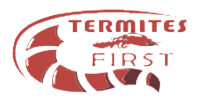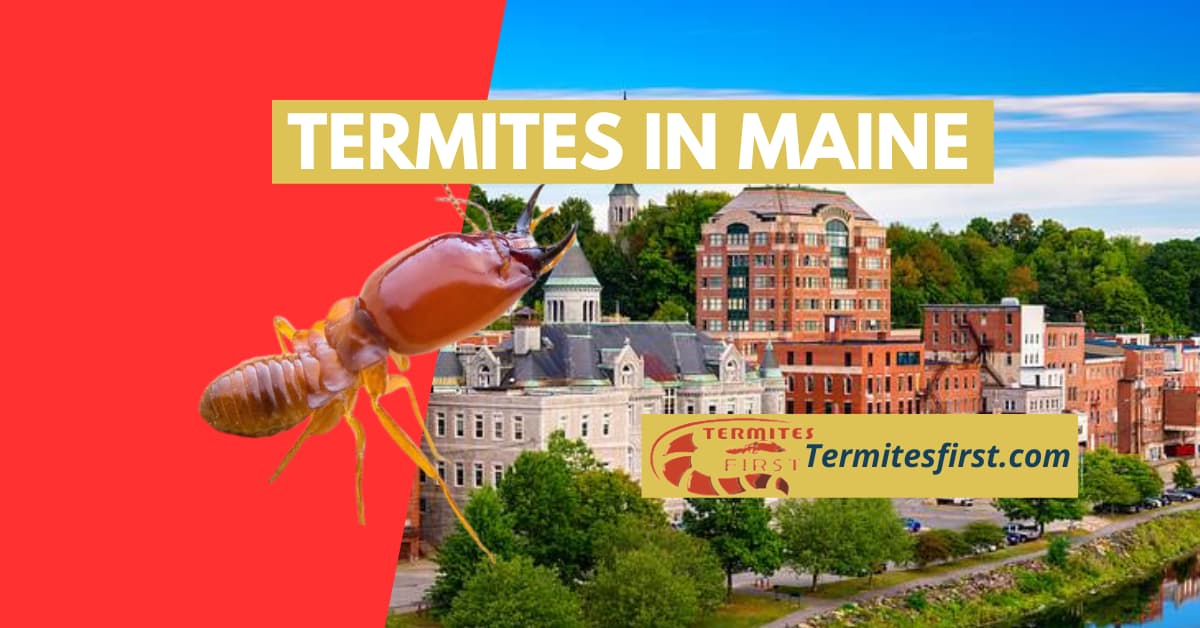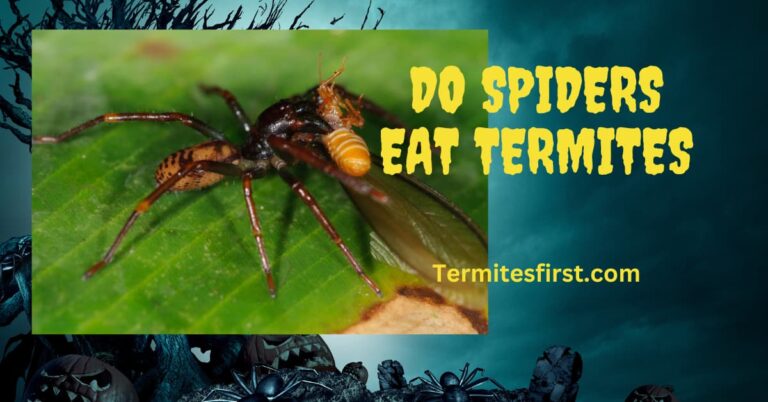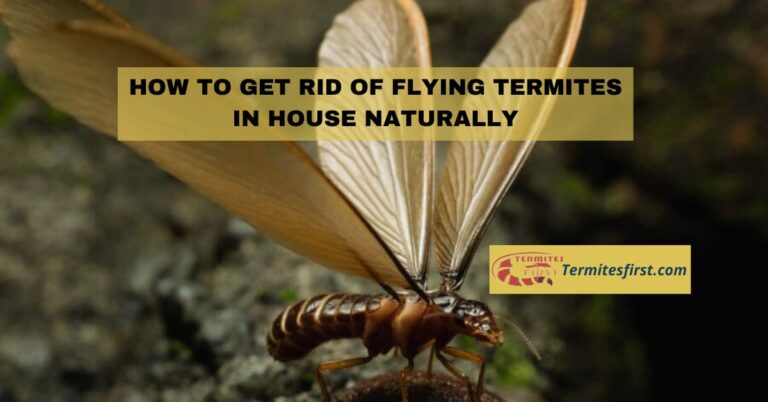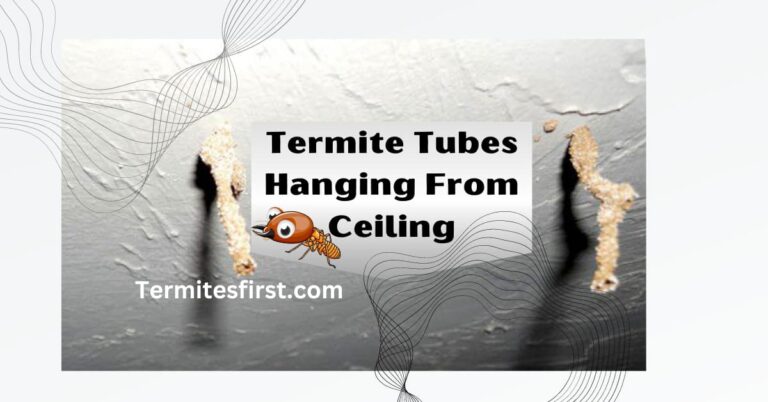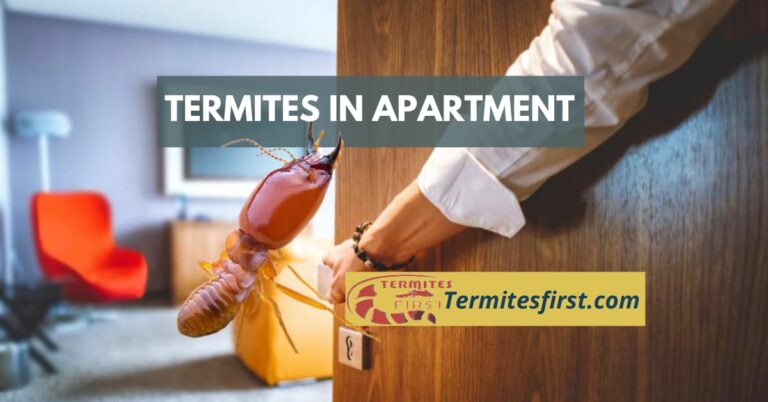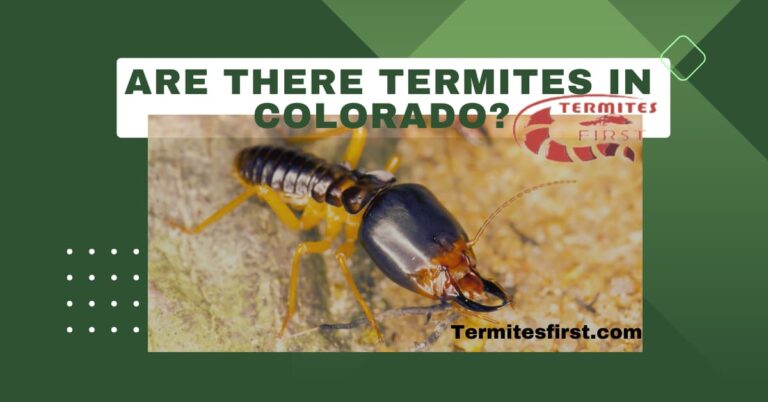Termites in Maine:A Complete Guide
If you’ve heard “Termites in Maine,” you may not think about anything more than small creatures munching on wood. However, the truth under the surface is interesting as it is significant. In this piece, we’re going to take an eye-opening tour of the fascinating world of termites in Maine. The tiny insects have a huge impact on our environment, and in some cases, they may become troublesome to homeowners. However, don’t worry! In this article, we’ll reveal the mysteries of these fascinating creatures and, more importantly, discover how to safeguard your house from their shrewd destructiveness.
Termite Activity in Maine
In some cases, termites could be an issue, particularly in the southern regions of Maine. They’re in greater danger than we think due to the fact that it’s very difficult to detect their presence. Termites, the tiny bugs, devour a great deal of wood each day. as much as a pound of it. They typically appear in large swarms during warm weather between March and May just following a rain. However, they may need help in hot rooms during December through February.
If you have a home you live in, it’s best to prevent termites from becoming a problem. It’s possible to do this by employing different strategies. There’s no one-size-fits-all method to stop them from happening; however, being aware of your options can help prevent the most serious damage that termites can cause. For your information, your home insurance does not generally cover damages caused by termites. However, the homeowner’s insurance policy will cover you from a myriad of hazards.
Are Termites Found in Maine?
Are there termites in Maine? Sure, termites are located throughout Maine. Though Maine’s climate isn’t so conducive to the activity of termites as other areas that have milder winters, Maine is not invincible to infestations of termites. The most prevalent species that is found throughout Maine is known as the Eastern Subterranean termite. The termites may seriously harm timber buildings. This makes it crucial for homeowners as well as property owners living in Maine to know about termite activity and adopt preventive steps to safeguard their home as well as their buildings.

What Do Termites in Maine Look Like?
Eastern Subterranean Termites that are typically encountered in Maine are comparatively tiny, measuring 1/4-1/2 inches in length. They are slender with a long body that is usually lighter or pale brown in hue. Under certain conditions of light, they can appear transparent or even whitish. In contrast to ants and termites, termites have no distinctive slicing lines between their abdomen and the thorax, giving an overall appearance.
Termites are characterized by an antenna that is straight and beaded. They distinguish them from elbowed or bent antennae that ants have. The wings of termites are one of their primary features. Eastern Subterranean Termites are equipped with two pairs of wings. They are equal in length. They are commonly called “swarmer” wings and are mostly used in the termite’s development phase. The termites that work are typically lighter and smaller in comparison to reproductive termites. They are also less colorful and lighter in color than the swarmers. Although reproductive termites do have wings and have the ability to fly, however, workers do not have wings. Workers termites are accountable for the destruction of wood structures, creating tunnels, and sustaining the colony.
Are Termites Common in Maine?
Termites can be found throughout Maine. However, they’re not as prevalent as those in the warmer states. The main species of termite that you’ll see throughout Maine is called the Eastern Subterranean termite. They’ve adapted to the cooler climate of Maine, yet they are still able to cause issues for structures and homes. Although termite problems within Maine are less common than in other warmer locations, homeowners need to be vigilant. Regular inspections conducted by experts in pest control and the use of techniques to build with termites can protect Maine homes from possible termite-related damage.
Signs of Termites in Maine
Termites are a serious and expensive problem for homes. The structural integrity of your property might suffer serious harm if you don’t take care of them. For the protection of your investment, it is essential to be proactive and keep looking for evidence of termites within your house or in your home. Be sure to avoid letting these bugs become an issue! These are the indicators of termite infestation in your home.
Mud Tubes:
One of the most important indicators of termite activity within Maine is the existence of Mud tubes. The tubes, which are roughly one-quarter of the size of pencils, are located along the foundation wall as well as on the exterior of buildings or within crawl areas. They are used as a way for termites to travel between their nests, and also they are a food source. The presence of termites can be determined if the mud tubes are visible.
Damaged Wood:
Termites use a clever method to feed onto wood from the outside while leaving the outside surface unharmed. This is why wood, which sounds hollow when it is tapped or shows a maze of tunnels in the interior, could be a sign of the presence of termites. Be on the lookout for weak wooden structures such as floorboards, beams, or even furniture.
Discarded Wings:
In the aftermath of a termite infestation, some wings have been discarded on windowsills, doors, or even light fixtures. They are abandoned by termites that reproduce after having picked a new location for their colony.These wings’ finding is proof that termites are active.
Piles of Frass:
Termites create small, pellet-like droppings referred to by the term “frass.” If you see tiny clumps of grass, particularly around wood structures, this is a sign that there are termites. The cause of these droppings is because of their habit of eating wood.
Sagging or Buckling Floors:
Damage from termites can weaken wood flooring and cause it to sag and buckle. If you’re experiencing strange modifications to your flooring, for example, bowing or unevenness, you should look at the possibility of termite activities.
Windows and Doors:
The inability to open or close doors and windows could indicate termite damage. Termites may eat wood around frames, causing difficulties with these fixtures.
Clicking Sounds:
Sometimes, you might listen to faint clicks or sounds emanating from walls or wooden structures. The sounds produced are usually made by termites who work as workers. Traverse the wood.
Hollow-Sounding Walls:
A gentle tap on the walls, particularly in places in which you are concerned about termite activity, could help in identifying the presence of termites. If your wall is acoustic, this could indicate that termites have entered the space.
Swarming Termites:
In spring and the springtime, early summer colonies produce swarms of female termites. If you see the swarms of termites around your home, it is a sign of a colony of termites nearby.
Tight-Fitting Doors and Windows:
Since termites can damage wood buildings, windows and doors could become difficult to shut or open, which could indicate potential issues with termites.

What Types of Termites are in Maine?
In Maine, it is common to encounter one kind of termite, which is known as the Eastern Subterranean Termite found in Maine. It is the most prevalent and well-known termite species across the northern United States, including Maine.
Eastern Subterranean Termites have adapted well to the harsher conditions of Maine. They’re known for their subterranean habits, which means they construct colonies underground and then construct tunnels of mud to get access to above-ground resources for food like wood. They can pose the biggest concern for homeowners who live in Maine since they’re capable of damaging wood structures.
Although other species of termites, like those of Formosan Subterranean Termites, as well as Drywood Termites, aren’t so prevalent in Maine because of its more frigid winters, the Eastern Subterranean Termite remains the most prevalent termite species within Maine. If you are concerned about termite activity in your Maine home, you must determine the species that is involved in order to decide on the best treatment options and preventive methods. A professional in pest control will help you identify the type of termite that is involved and deal with the problem effectively.
Are there Formosan termites in Maine?
Formosan termites are known due to their massive colonies and destructive nature. They are not an everyday issue in Maine. They are particularly frequent in places with warm, tropical climates, such as Louisiana and Florida. Maine’s cooler climate, particularly during winter, isn’t suitable for Formosan termites. The Eastern Subterranean Termite is one of the species that homeowners in Maine need to be on the lookout for the most frequently.
The termites have a great adaptability to the Maine climate and may be destructive to wood structures. Though Formosan termites don’t pose an issue that is commonplace in Maine, people must be conscious of the Eastern Subterranean termites and the potential harm they could cause to structures and homes. Suppose you are concerned about termite activity within Maine. In that case, it is more likely to be an Eastern Subterranean Termite, which is why it is recommended that an expert monitoring and inspection strategy be in place.
When Do Termites Swarm in Maine?
Termites found in Maine generally swarm in the spring and early summer months. Swarming is typically connected to termites that reproduce. Swarming is a crucial aspect of the termite’s development since it assists young termites in starting colonies. In Maine, the state of Maine, expect termite swarms from late April through the middle of June. The timing coincides with increasing humidity and warming temperatures in the springtime. Swarming termites are typically the females of the colony.
They are often called “swarmers” or “alates.” They are in charge of mating and starting new colonies, and they have wings. Termite swarms represent nature’s method to ensure the continued existence and spread of termite colonies. When a swarm is formed, both males and females depart from their respective colonies to search for a mate in a different colony. When they’ve been paired and shed their wings, they take off and start a new colony together. Termite Swarms can be recognized due to the sudden emergence of huge numbers of termites with wings emerging from nests or in mud tubes. Following mating, they drop into the earth, shed their wings, and search for an appropriate site to begin an entirely new colony.
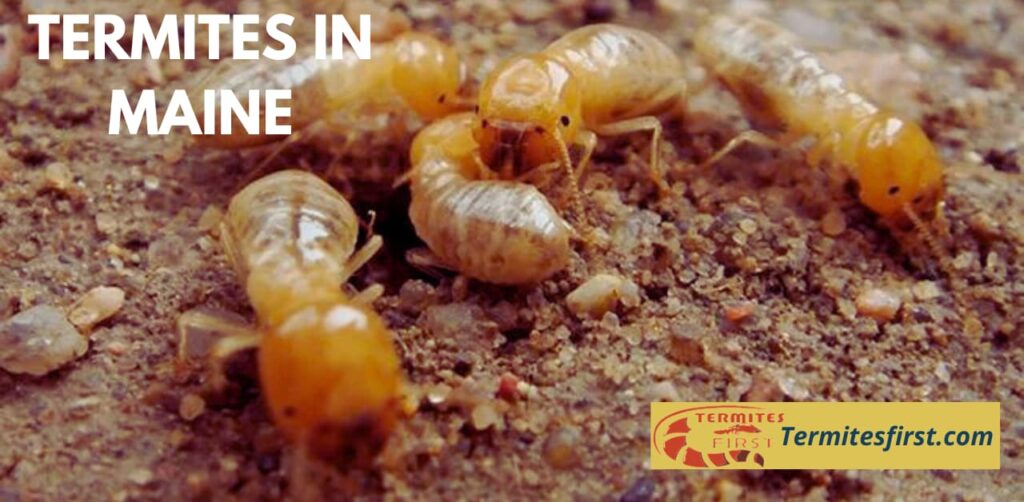
How Harmful are Termites in Maine?
Termites found in Maine are a threat to structures and homes. However, they aren’t likely to cause as much harm as other areas with warmer temperatures. The primary termite species found within Maine includes the Eastern Subterranean termite, which is well-adapted to the chilly climate in Maine. The termites are able to eat timber in structures, including flooring and beams, which can weaken the structures.
The repair of termite damage could take a significant amount of money in addition to lowering the property’s value for resale. The standard home insurance policy doesn’t typically protect against termite damage. Therefore, homeowners might have to make repairs on their own. Additionally, the presence of termites can cause conditions that can lead to mildew and mold, which could affect your health. Termites in Maine may not be as destructive as they are in warm climates. Still, nevertheless, homeowners and homeowners need to make sure they take the necessary steps to stop termite infestations.
How to treat termite infestations in Maine?
In the event of a termite infestation within Maine, It is essential to take these steps for effective treatment against any termites. Start by having an experienced pest control specialist examine your home. They’ll analyze the issue to determine the species that they are and then recommend a specific plan for treatment. Depending on the species and the extent of the infestation, several treatment strategies are used.
There are a variety of options for soil chemicals and bait stations, as well as wood treatments and physical barriers. Termite baiting systems include the placement of bait stations on your property in order to attract and deter termites. Following treatment, maintain an eye on the area, as pest control professionals can conduct follow-up visits. To avoid future infestations, repair leaks, make sure there is adequate drainage, and stay clear of contact between wood and ground. Termite infestations must be avoided by routine maintenance and inspections.
Conclusion:-
In Maine, some termites may not be as prevalent as in hotter regions; however, they are still able to be a problem for houses. The primary species of termite in this area is called the Eastern Subterranean Termite, which is adapting to the colder climate of Maine. For your house to be safe, you must be vigilant, conduct regular inspections of your termite population by experts, and employ preventive measures. The prevention of termites, the detection of their early signs, and the ability to act swiftly are key to safeguarding your home. Through these actions, individuals who live in Maine are able to keep their homes secure from termites.
FAQ’s:-
Yes, termites can be a problem in Maine, but it’s less common than in warmer areas. The main type of termite found here is the Eastern Subterranean Termite, which is adapted to Maine’s colder weather. Even though they might not be as much of an issue, they can still cause harm to properties.
Yes, flying termites, also known as termite swarmers or alates, can be found in Maine. These flying termites are typically reproductive members of termite colonies, and they emerge during the swarming season to mate and establish new colonies.
Termites are most active in the southern and coastal areas of Maine, but they can be found throughout the state, including inland and northern regions.
In Maine, the spring and early summer are when termites are most active. Their activity typically peaks between late April and early June when the weather becomes warmer and more humid, making it ideal for termite swarms and colony establishment.
